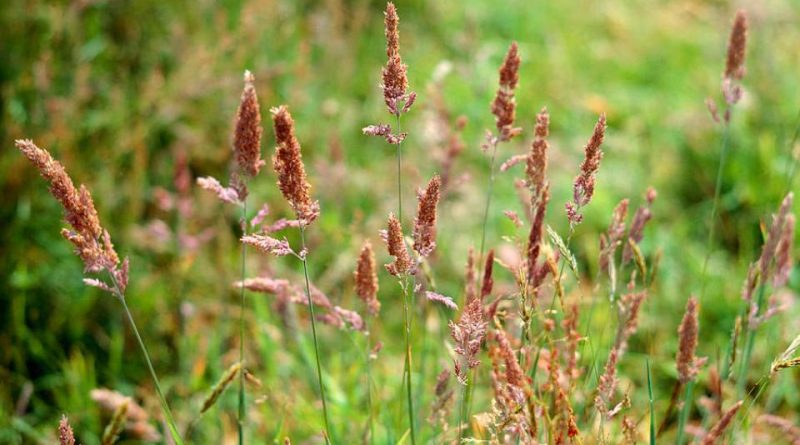Festuca rubra
Festuca rubra
The red fescue or creeping red fescue (Festuca rubra L.) is a herbaceous species belonging to the Poaceae family.
Systematics –
From the systematic point of view it belongs to the Eukaryota Domain, United Plantae, Magnoliophyta Division, Liliopsida Class, Poales Order, Poaceae Family and therefore to the Genus Festuca and to the F. rubra Species.
The subspecies present in Italy are: Festuca rubra subsp. commutata (Gaudin) Markgr.-Dann., Festuca rubra subsp. juncea (Hack.) K. Richt., Festuca rubra subsp. litoralis (G. Mey.) Auquier, Festuca rubra subsp. microphylla St.-Yves and Festuca rubra L. subsp. Rubra.
Etymology –
The term Festuca derives from festuca gambo, fuscello, stem. The specific epithet rubra comes from rúbeo reddish, being red, due to the presence of characteristic red elements.
Geographical Distribution and Habitat –
The red fescue is a species present in almost all areas of the world, but with important gaps. It grows in habitats represented by cold and temperate-cold areas of Europe, Asia and North America. It is a microthermal species that adapts to climatic conditions with temperatures between 15 and 25 ° C and in neutral and acid soils. It is also present in Italy in a spontaneous state from the center to the north.
Description –
The Festuca rubra is a perennial herb with some sub species that differ in the presence of rhizomes or assets. This plant can grow between 30 and 60 cm in height. Like all fescues, the leaves are narrow and needle-like, which makes it less appealing to livestock. The meadows that form are not as fluid as the festuca ovina (Festuca ovina). The leaves are bright green.
The Anteceto is with oblong caryopsis of 3-4.5 mm. Spikelets 4-6 floras of 7-10 mm, green, which are disarticulated under each fertile flower; 1.9-2.3 x 5-7 mm headword with 1-2.5 mm remains.
Cultivation –
The red fescue prefers well-drained soils, cool places and temperate climates, but prefers to stay in sunny areas even if it is tolerant in the shade. It is a nutritious and appetizing forage herb for domestic and wild animals, but has never been present in the market due to its low productivity and palatability.
In fact, despite the excellent quality of the grass, its diffusion as fodder is limited, due to its modest productivity, to mountain areas, where it can be added to complex mixtures to constitute the “bottom” of the rind. It is however suitable for grazing, for making turf and technical grassing (slopes, ski slopes, etc.).
This species can be left completely uncultivated, or occasionally cut to make the lawn compact and clean to the eye of the beholder. There are many subspecies, and many cultivars have been produced commercial horticulture.
Uses and Traditions –
The Festuca rubra is a plant with a fine leaf texture, it adapts to fresh and humid environments and is very suitable for shaded areas. It has fine leaves of a bright green color, is medium-low in size, suitable for lawns. It is in fact marketed and cultivated above all as an ornamental plant for gardens and for the establishment of lawns for sports or ornamental use. It forms a very dense carpet. It is particularly suitable for sports fields, highly frequented ornamental lawns, for fairways and for golf course tees.
The many varieties available (over two hundred in Europe and 10 in the Italian Catalog) are mostly intended for non-forage purposes. There is no Italian selection: the cultivars “Echo”, Danish and “Kos”, Polish, are available on the market.
Preparation Mode –
The Festuca rubra is a species that has no particular applications in the forage field while, also thanks to its different varieties, it can be used as an essence for lawns and ornamental carpets. It has no particular applications in the pharmaceutical field.
Guido Bissanti
Sources
– Acta Plantarum – Flora of the Italian Regions.
– Wikipedia, the free encyclopedia.
– Treben M., 2000. Health from the Pharmacy of the Lord, Advice and experiences with medicinal herbs, Ennsthaler Editore
– Pignatti S., 1982. Flora of Italy, Edagricole, Bologna.
– Conti F., Abbate G., Alessandrini A., Blasi C. (edited by), 2005. An annotated checklist of the Italian vascular flora, Palombi Editore.
Attention: Pharmaceutical applications and food uses are indicated for informational purposes only, do not in any way represent a medical prescription; therefore no responsibility is assumed for their use for curative, aesthetic or food purposes.


